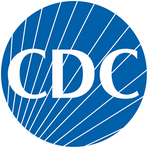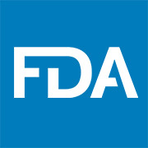The Evolving Landscape of Public Health: COVID-19 Tests and STD Trends
November 14, 2024, 4:23 pm

Location: United States, Georgia, Atlanta
Employees: 10001+
Founded date: 1946
Public health is a shifting terrain. New challenges emerge, while old ones resurface. Recently, two significant health topics have captured attention: the FDA's guidance on expired COVID-19 tests and the changing dynamics of sexually transmitted diseases (STDs) in the U.S. These issues highlight the complexities of health management in a post-pandemic world.
The FDA has issued a crucial reminder: don’t toss those expired COVID-19 tests just yet. The agency has extended the expiration dates for many at-home tests. This decision is a lifeline for those who may not have immediate access to new tests. It’s a nod to practicality in a world still grappling with the virus. As respiratory virus season approaches, the need for testing becomes paramount. Symptoms like fever, sore throat, and loss of taste can signal a COVID-19 infection. The message is clear: better safe than sorry. If you feel unwell, stay home. Seek a test when symptoms arise.
The FDA’s extension is a reminder of the pandemic’s lingering presence. COVID-19 is not a ghost of the past; it’s a reality that demands vigilance. The respiratory virus season is upon us, and with it comes the potential for increased infections. The FDA’s guidance serves as a safety net, encouraging individuals to remain proactive about their health.
In contrast, the landscape of STDs in the U.S. is shifting. After years of rising cases, recent reports indicate a decline in new syphilis infections among gay and bisexual men. This drop, a 13% decrease, marks a significant milestone. It’s the first decline in this demographic since the mid-2000s. The decline can be attributed to several factors, including increased awareness and access to treatment.
However, the picture is not entirely rosy. While early-stage syphilis cases have fallen, late-stage infections are on the rise. This suggests a troubling trend: many individuals remain unaware of their infections until it’s too late. The increase in congenital syphilis cases is particularly alarming. Nearly 4,000 cases were reported, leading to stillbirths and infant deaths. This highlights a critical gap in prenatal care. Pregnant women must be tested regularly to prevent transmission to their newborns.
The introduction of doxycycline as a “morning-after pill” for STDs has been a game changer. This antibiotic, when taken within 72 hours of unprotected sex, significantly reduces the risk of developing syphilis, gonorrhea, and chlamydia. The CDC’s recommendation to use doxycycline specifically for at-risk populations is a proactive step. It empowers individuals to take control of their sexual health.
The aftermath of the 2022 mpox outbreak also plays a role in the current STD landscape. The outbreak prompted many to reconsider their sexual behaviors and seek testing. Increased testing and contact tracing efforts have been bolstered by federal funding. However, this funding is now at risk. A recent debt ceiling deal cut $400 million from STD prevention programs. This could hinder progress made in recent years.
Despite these challenges, there is a glimmer of hope. The growing use of at-home STD test kits and increased awareness around sexual health could lead to further declines in infections. Public health experts emphasize the importance of sustained funding and resources. When the government invests in health initiatives, communities see tangible results.
The political landscape also influences public health strategies. The previous administration’s commitment to reducing HIV infections by 2030 reflects a broader understanding of the interconnectedness of health issues. A focus on HIV could lead to improvements in other STDs as well. The key lies in comprehensive health funding and education.
As we navigate these complex health issues, it’s essential to remain informed and proactive. The FDA’s guidance on COVID-19 tests serves as a reminder of the importance of vigilance. Meanwhile, the evolving trends in STDs underscore the need for continued education and access to healthcare. Public health is a shared responsibility. Each individual plays a role in shaping the future of community health.
In conclusion, the landscape of public health is dynamic. The interplay between COVID-19 and STDs illustrates the ongoing challenges we face. As we adapt to these realities, let’s prioritize awareness, testing, and education. The health of our communities depends on it. The road ahead may be uncertain, but with vigilance and action, we can navigate the complexities of public health together.
The FDA has issued a crucial reminder: don’t toss those expired COVID-19 tests just yet. The agency has extended the expiration dates for many at-home tests. This decision is a lifeline for those who may not have immediate access to new tests. It’s a nod to practicality in a world still grappling with the virus. As respiratory virus season approaches, the need for testing becomes paramount. Symptoms like fever, sore throat, and loss of taste can signal a COVID-19 infection. The message is clear: better safe than sorry. If you feel unwell, stay home. Seek a test when symptoms arise.
The FDA’s extension is a reminder of the pandemic’s lingering presence. COVID-19 is not a ghost of the past; it’s a reality that demands vigilance. The respiratory virus season is upon us, and with it comes the potential for increased infections. The FDA’s guidance serves as a safety net, encouraging individuals to remain proactive about their health.
In contrast, the landscape of STDs in the U.S. is shifting. After years of rising cases, recent reports indicate a decline in new syphilis infections among gay and bisexual men. This drop, a 13% decrease, marks a significant milestone. It’s the first decline in this demographic since the mid-2000s. The decline can be attributed to several factors, including increased awareness and access to treatment.
However, the picture is not entirely rosy. While early-stage syphilis cases have fallen, late-stage infections are on the rise. This suggests a troubling trend: many individuals remain unaware of their infections until it’s too late. The increase in congenital syphilis cases is particularly alarming. Nearly 4,000 cases were reported, leading to stillbirths and infant deaths. This highlights a critical gap in prenatal care. Pregnant women must be tested regularly to prevent transmission to their newborns.
The introduction of doxycycline as a “morning-after pill” for STDs has been a game changer. This antibiotic, when taken within 72 hours of unprotected sex, significantly reduces the risk of developing syphilis, gonorrhea, and chlamydia. The CDC’s recommendation to use doxycycline specifically for at-risk populations is a proactive step. It empowers individuals to take control of their sexual health.
The aftermath of the 2022 mpox outbreak also plays a role in the current STD landscape. The outbreak prompted many to reconsider their sexual behaviors and seek testing. Increased testing and contact tracing efforts have been bolstered by federal funding. However, this funding is now at risk. A recent debt ceiling deal cut $400 million from STD prevention programs. This could hinder progress made in recent years.
Despite these challenges, there is a glimmer of hope. The growing use of at-home STD test kits and increased awareness around sexual health could lead to further declines in infections. Public health experts emphasize the importance of sustained funding and resources. When the government invests in health initiatives, communities see tangible results.
The political landscape also influences public health strategies. The previous administration’s commitment to reducing HIV infections by 2030 reflects a broader understanding of the interconnectedness of health issues. A focus on HIV could lead to improvements in other STDs as well. The key lies in comprehensive health funding and education.
As we navigate these complex health issues, it’s essential to remain informed and proactive. The FDA’s guidance on COVID-19 tests serves as a reminder of the importance of vigilance. Meanwhile, the evolving trends in STDs underscore the need for continued education and access to healthcare. Public health is a shared responsibility. Each individual plays a role in shaping the future of community health.
In conclusion, the landscape of public health is dynamic. The interplay between COVID-19 and STDs illustrates the ongoing challenges we face. As we adapt to these realities, let’s prioritize awareness, testing, and education. The health of our communities depends on it. The road ahead may be uncertain, but with vigilance and action, we can navigate the complexities of public health together.
